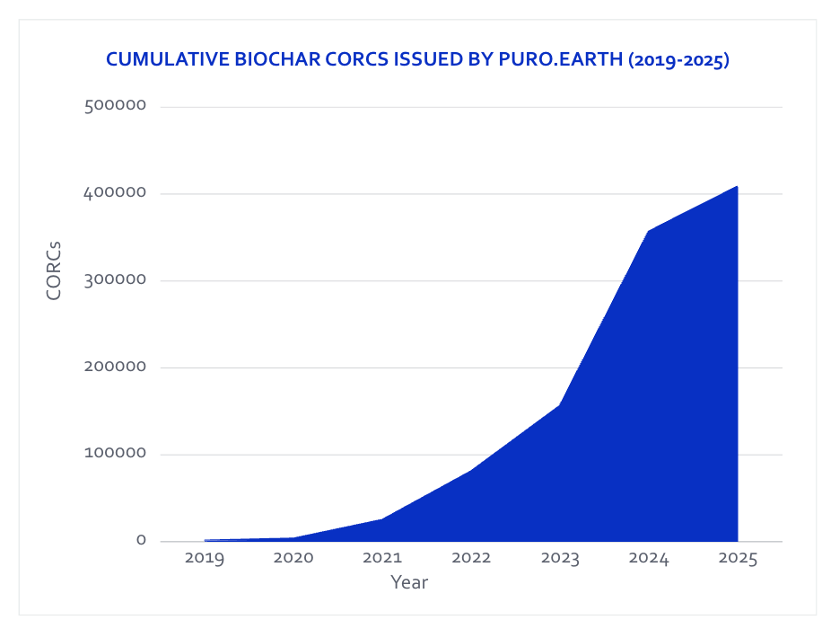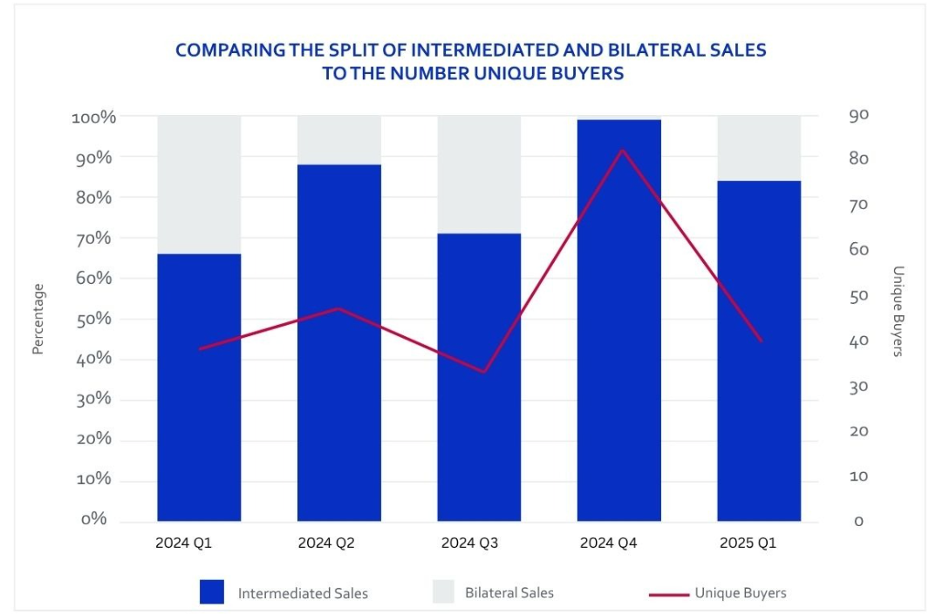Biochar stands out as one of the most significant carbon dioxide removal (CDR) success stories to date, signaling a dynamic era in scalable, science-backed carbon management.
But what is biochar exactly? Biochar is a stable, carbon-rich material made by heating organic matter without oxygen, effectively locking carbon away for centuries. Its appeal lies in not only removing CO₂ from the atmosphere but also in improving soil health and water retention, making it attractive to both farmers and sustainability-focused companies. Its versatility is also key to broad adoption. Biochar can be produced from a variety of feedstocks, including forestry residues, agricultural waste, and even municipal green biomass. This flexibility allows local communities, large facilities, and distributed networks of farmers to participate in durable carbon removal at multiple scales.
With powerful co-benefits and expanding access, biochar is proving to be more than a climate solution. It is rapidly becoming a bridge between environmental stewardship, agricultural innovation, and credible climate finance, aligning incentives for project developers, buyers, and local communities alike.
Market Growth and Leadership
Biochar’s surge in momentum has made it a standout technology within evolving carbon markets, demonstrating resilience and versatility in its deployment across industries. Recent market analysis underscores biochar’s rapid expansion, fueled by exponential growth in project numbers, increasing demand from diverse sectors, and the sector’s continued march toward market maturity.
This acceleration is captured in the latest industry report from Puro.earth, a major standard and registry for durable carbon removal, which offers a detailed snapshot of global trends and leadership in biochar adoption. As climate solutions command more attention worldwide, this analysis sets the stage for a dynamic new era for biochar investment and deployment.
Market Growth and Leadership
Based on Puro.earth’s industry report, biochar has rapidly outpaced other CDR solutions in both acceptance and operational scale since 2019. By June 2025, Puro.earth had issued over 408,000 biochar CO Removal Certificates (CORCs) (i.e. carbon removal credits), with biochar methodologies delivering 43% of market-verified durable carbon removal volumes to buyers. The compound annual growth rate (CAGR) of biochar issuances reached 199% from 2019 to 2024—a clear signal that biochar is moving from experimental phases to large-scale commercial deployment.

Liquidity and Market Dynamics
The biochar market boasts robust liquidity. During recent years, 93% of biochar CORCs completed a primary transfer, and 80% were retired within the reporting period, with an average primary transfer time now just 22 days in 2025 (down from 95 days in 2021). The speed of these transactions is attributed to growing offtake agreements and a healthy forward contract market, with more than 2 million tons contracted for future delivery among top suppliers.
Maturing Ecosystem and Price Trends
Intermediation dominates biochar CORC sales, as 85% are transacted through brokers or platforms rather than directly with end-buyers. This shift shortens onboarding time for new buyers and supports market efficiency. The Nasdaq CORCCHAR index now offers monthly price transparency, showing stable average prices ranging from $125 to $145 per CORC in 2025.

Demand Segments and Geographies
Most demand comes from the Global North, especially the United States (68% of beneficiaries), followed by the UK and EU nations. Leading sectors include financial services (34%), professional services (29%), and technology (18%), reflecting both the sustainability priorities and reporting cycles of these corporations.
Key Takeaways
- Biochar is the most mature and significant CDR technology at this point, setting benchmarks in volume and verification protocols.
- Innovative approaches in measurement, permanence, and carbon accounting continue to enhance sector credibility.
- Market transparency, intermediaries, and diversified buyers support a healthy and rapidly expanding marketplace for biochar credits.
The future for biochar is promising, with strong growth, ongoing innovation, and mounting investor confidence paving the way for its pivotal role in global carbon removal strategies.

